A History of Music - Part III (1765 - 1787)
Ongoing tracker of each composition, song, album or other piece of music that I review/listen to for this project. This part consists of much of the Classical era, leading into the late 1780s. |
| 1 |  | Wolfgang Amadeus Mozart
Symphony No.5 in B♭ major, K.22
December 1765
The slightest of the early symphonies, so brief that even the upbeat melody barely registers. |
| 2 | 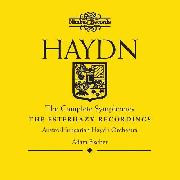 | Joseph Haydn
Symphony No.38 in D major "The Echo"
1767
The emphasis on back-and-forth ostinatos (especially in movement #2) make this symphony feel especially repetitive at times, although the oboe feature in the last movement is exceptional. |
| 3 |  | Wolfgang Amadeus Mozart
Piano Concerto No. 1 in F major, K. 37
1767
While a lot of the material on here is taken from other composers of the day (these seem to have been exercises for Mozart rather than being intended for publication), the highlight is the major-minor transitions of the second movement, the part that is believed to have been composed by Mozart himself. Some of his best writing from this era. |
| 4 | 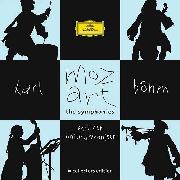 | Wolfgang Amadeus Mozart
Symphony No.6 in F major, K.43
30 December 1767
The first 4 movement symphony from young Mozart. Movement #2 is an especially nice highlight from this work. |
| 5 | 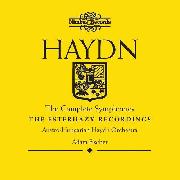 | Joseph Haydn
Symphony No.26 in E-flat major "Lamentatione"
1768
Slight Haydn, very much so, although there is a nice lilt to it at times. |
| 6 |  | Joseph Haydn
Symphony No.39 in G minor "Tempesta di mare"
1768
Highlighted by the last movement - tempestuous indeed, not quite a Mannheim sound but close. |
| 7 |  | Wolfgang Amadeus Mozart
Symphony No.7 in D major, K.45
January 1768
Mostly a slight symphony, but the last movement plays around with dynamics in an interesting manner. |
| 8 |  | Wolfgang Amadeus Mozart
Symphony No.8 in D major, K.48
13 December 1768
Strange ending to this symphony, sort of petering out rather than concluding conclusively. Nice first movement though. |
| 9 | 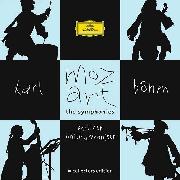 | Wolfgang Amadeus Mozart
Symphony No.9 in C major, K.73/75a
1769
Pleasant, yet among the child's most non-descript works to date. |
| 10 | 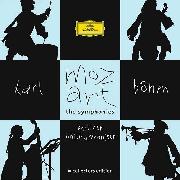 | Wolfgang Amadeus Mozart
Symphony No.10 in G major, K.74
1770
Difficult to evaluate as it's structured in 3 parts over 2 movements (an Italian structure of the day), so performances often don't even cross the 10 minute mark. |
| 11 | 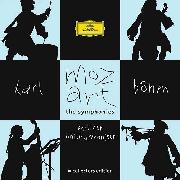 | Wolfgang Amadeus Mozart
Symphony No.11 in D major, K.84/73q
1770
The last movement is a nice 6/8 romp, although this is still a bit before Mozart begins maturing as a composer. |
| 12 |  | Luigi Boccherini
String Quintet in E major, op. 11
1771
The third movement is the standout of course, with its sublime violin melody and how the other parts fit in to complement it. The rest of the composition is more straightforward, giving other instruments time in the spotlight while never really overstaying its welcome. |
| 13 | 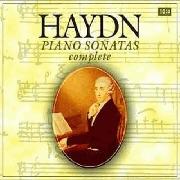 | Joseph Haydn
Piano Sonata in C minor, Hob. XVI/20
1771
Piano works are not Haydn's strength, but there are still nice moments to be had here. |
| 14 | 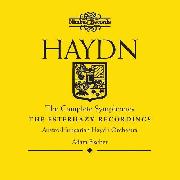 | Joseph Haydn
Symphony No.43 in E-flat major "Mercury"
1771
A lot of motion in this work, which is made all the better for it. Perhaps the most mature and elaborate of his symphonies to date, with a long introductory movement and another dosage of Mannheim inspiration at the very end. |
| 15 |  | Wolfgang Amadeus Mozart
Symphony No.12 in G major, K.110/75b
November 1771
The works are growing more complex now...movement #1 is a miniature tour de force. |
| 16 |  | Wolfgang Amadeus Mozart
Symphony No.13 in F major, K.112
November 1771
A step down from the promise of #12, though pleasant still. |
| 17 |  | Wolfgang Amadeus Mozart
Symphony No.14 in A major, K.114
30 December 1771
More Italian-inspired work from the young Austrian - the influence of J.C. Bach is especially apparent here. |
| 18 |  | Joseph Haydn
String Quartets, Op. 20 ("Sun Quartets")
1772
The genre of the string quartet existed before this publication, but the Sun Quartets transformed it into the form that listeners will recognize today. Between a formal structure that promoted clearer development of melodic ideas, and Haydn finding a greater balance in the instruments (making the work sound like a proper ensemble piece), these quartets marked not just the foundation of what Haydn would build off of for his more famous collections, but what Beethoven and his brethren would build off of as well. Personal favorites would be the fourth and fifth quartets in this collection. |
| 19 |  | Joseph Haydn
Symphony No.44 in E minor "Trauer"
1772
Haydn's greatest symphony to this point, a melancholy work that has moments of drama mixed with moments of pure sadness (such that Haydn supposedly wanted the third movement played at his funeral). The minuet bring placed second in the order instead of third is an interesting twist as well. |
| 20 | 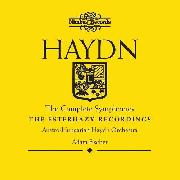 | Joseph Haydn
Symphony No.45 in F-sharp minor "Farewell"
1772
On the longer side for symphonies of the day, this thing was very popular for its strong melodic development and the curious usage of specially modified horns that allowed players greater range and versatility. |
| 21 |  | Wolfgang Amadeus Mozart
String Quartet no. 2 in D major, K. 155
1772
Distinct from Mozart's other string works of the period for its distinctive modulations in the first movement. |
| 22 |  | Wolfgang Amadeus Mozart
Symphony No.15 in G major, K.124
1772
Copy-paste "solid early Mozart symphony" here. |
| 23 |  | Wolfgang Amadeus Mozart
Symphony No.16 in C major, K.128
May 1772
Jaunty 3 movement symphony, the first and last being written in a triple meter that makes this a very danceable work for the young lad. |
| 24 |  | Wolfgang Amadeus Mozart
Symphony No.17 in G major, K.129
May 1772
The second movement is possibly Mozart's first big triumph as a melodist - absolutely gorgeous stuff. Everything else is nice, but closer in quality to his other work from the period. |
| 25 |  | Wolfgang Amadeus Mozart
Symphony No.18 in F major, K.130
May 1772
Adventurous and tumultuous last movement is the clear highlight - unusually long for a Mozart symphony movement of this time. |
| 26 |  | Wolfgang Amadeus Mozart
Symphony No.19 in E-flat major, K.132
July 1772
Lovely slow movement and a French-inspired closing movement make this one of young Mozart's most elegant works. |
| 27 |  | Wolfgang Amadeus Mozart
Symphony No.20 in D major, K.133
July 1772
A brassier instrumentation this time around, with more than a little influence from the French Baroque grand concertos by the sounds of it. |
| 28 |  | Wolfgang Amadeus Mozart
Symphony No. 21 in A major, K. 134
August 1772
By-the-numbers compared to some of the other '72 symphonies, but take notice of some of his string writing here: sophisticated in a way it wasn't even 3 years prior. |
| 29 | 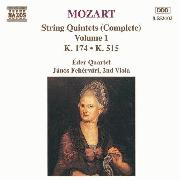 | Wolfgang Amadeus Mozart
String Quintet No. 1 in B-flat major, K. 174
1773
Inspired by the works of Michael Haydn (Joseph's younger brother), this piece has the energy of a symphony at times, although the highlight is probably the slower second movement. |
| 30 |  | Wolfgang Amadeus Mozart
Symphony No.26 in E-flat major, K.184/161a
30 March 1773
Much closer to his pre-25 output than no. 25 itself, but still nice and vivacious. |
| 31 |  | Wolfgang Amadeus Mozart
Symphony No.22 in C major, K.162
April 1773
Primitive melodies that wouldn't be out of place in the earliest Mozart works, but again, the maturing arranging saves them from complete banality. |
| 32 |  | Wolfgang Amadeus Mozart
Symphony No.27 in G major, K.199/161b
April 1773
The last movement is very nice and energetic, although the rest of it is a bit too close to Mozart's typical style for the period. |
| 33 | 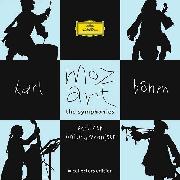 | Wolfgang Amadeus Mozart
Symphony No.23 in D major, K.181/162b
19 May 1773
Strong first movement with some aggressive string work. |
| 34 | 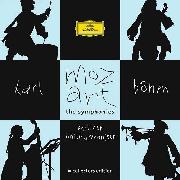 | Wolfgang Amadeus Mozart
Symphony No.24 in B♭ major, K.182/173dA
3 October 1773
One of his briefest symphonies, with a spirited final movement that keeps the piece racing all the way to the finish line. |
| 35 | 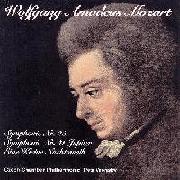 | Wolfgang Amadeus Mozart
Symphony No. 25 in G minor, K. 183/173dB
5 October 1773
The intro to the first movement is genuinely startling - such an attention-grabbing moment that floors everything else Mozart had done to that point. The rest of the symphony remains his best to date, unique for its minor key melodies and overall promoting a genuinely stunning interpretation of the "Sturm und Drang" movement. Very, very mature. |
| 36 |  | Joseph Haydn
Symphony No. 56 in C major
1774
The first movement of this is great, positively (dare we say it) Mozart-like in its jovial bounce. |
| 37 |  | Wolfgang Amadeus Mozart
Piano Sonata No.1 in C, K279
1774
Really dig the slow movement here, plays with space in a way that his piano concertos really weren't doing at the time. |
| 38 |  | Wolfgang Amadeus Mozart
Piano Sonata No.2 in F, K280
1774
The last movement's little minor-major oscillations are quite quirky and fun, making this one of Mozart's more lightweight piano sonatas. |
| 39 |  | Wolfgang Amadeus Mozart
Piano Sonata No.3 in B flat, K281
1774
Technically very challenging, with some really dexterous two-hand interplay throughout its runtime. Loses some melodic intrigue as a result, but not to an off-putting degree. |
| 40 | 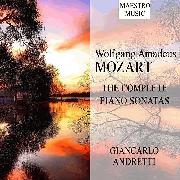 | Wolfgang Amadeus Mozart
Piano Sonata No.4 in E flat, K282
1774
The Adagio movement starts this sonata out pleasantly enough, although the rest of it isn't one of his top-flight works. |
| 41 |  | Wolfgang Amadeus Mozart
Piano Sonata No. 5 in G major K. 283 / 189h
1774
The first movement is a mainstay of intermediate piano repertoire, and for good reason - it's simple enough with a really lovely melody, and it's often described as a classic example of the base structure of sonata form. |
| 42 |  | Wolfgang Amadeus Mozart
Symphony No. 29 in A major, K. 201
6 April 1774
A very grim-sounding work for this era of Mozart's career - the slow movement is a high water mark, but the finale is so clustered-sounding, so laden with discomfort, that it might pack the strongest emotional punch of anything here. |
| 43 |  | Wolfgang Amadeus Mozart
Symphony No. 30 in D major, K. 202/186b
5 May 1774
Brassier than some of the other symphonies, although there is a certain dance-like quality that imbues both the slower and more upbeat movements. |
| 44 |  | Wolfgang Amadeus Mozart
Symphony No. 28 in C major, K. 200/189k
November 1774
Similar to #25 in its use of declarative statements (such as the opening movement), but weaker in some ways, and the slow movement is probably the strongest part here. |
| 45 |  | Carl Philipp Emanuel Bach
Orchester-Sinfonien mit zwölf obligaten Stimmen
1775
The most famous of Bach's symphonies, lively things with some truly great wind parts that Bach evidently understood the importance of (hence why they are referred to as "obligaten", or "obligatory"). |
| 46 |  | Wolfgang Amadeus Mozart
Piano Sonata No. 6 in D major K. 284 / K. 205b
1775
The final movement is a work unto itself, a theme with a dozen subsequent variations that dominates the piece's entire performance time (pretty much). Elaborate structurally for a sonata of its time. |
| 47 |  | Wolfgang Amadeus Mozart
Violin Concerto No.4 in D major, K.218
1775
Supposedly a concerto Mozart composed for himself to play, but then reassigned to someone else after realizing it was too difficult for him to play. Fun story, fun piece. |
| 48 | 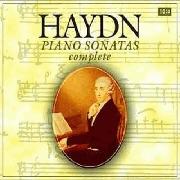 | Joseph Haydn
Piano Sonata in B minor, Hob. XVI/32
1776
A master of the piano sonata form, Haydn was not, but this is still nice...you can hear some very strong Mozart influence at this point. |
| 49 |  | Wolfgang Amadeus Mozart
Piano Sonata No. 7 in C major K. 309 / K. 284b
1777
A spritely opening movement dominates what is otherwise a relatively interchangeable late '70s Mozart piano sonata. |
| 50 |  | Wolfgang Amadeus Mozart
Piano Sonata No. 8 in A minor, K. 310/300d
1777
Terrific melody in the opening movement, really lovely slow movement, and then a final movement so short it feels like a coda. |
| 51 | 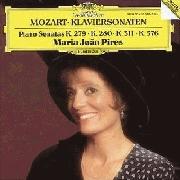 | Wolfgang Amadeus Mozart
Piano Sonata No. 9 in D major K. 311 / K. 284c
1777
Cadenzas in the last movement are perhaps the most outlandish aspect of this piece, but otherwise it is a fine example of formal development, and a mainstay of music theory curriculums as a result. |
| 52 |  | Wolfgang Amadeus Mozart
Piano Concerto No.9 E-flat major, K.271
January 1777
Brilliant, an early example of the expressionist ideals that romanticism would portray some 50 years down the line. A Beethoven precedent in a lot of ways, with its use of dynamics and cadenza patterns to play with tempos. |
| 53 |  | Wolfgang Amadeus Mozart
Concerto For Flute and Harp in C Major, K. 299
April 1778
One of two double concertos Mozart wrote in his lifetime, the harp part especially is rather unique in its likeness to keyboard pieces. |
| 54 |  | Wolfgang Amadeus Mozart
"Paris" Symphony No. 31 in D major, K. 297/300a
12 June 1778
A popular symphony of Mozart's, one that seems to have garnered him a lot of praise. It's for good reason, too: the scope of his works is becoming increasingly epic, and this piece has some ear-catching moments with aggressive melodies. |
| 55 |  | Wolfgang Amadeus Mozart
Symphony No. 32 in G major, K. 318
1779
Miniature work inspired by the Italian overture style (not Mozart's first attempt in that vein, although perhaps his best). |
| 56 |  | Wolfgang Amadeus Mozart
Symphony No. 33 in B♭ Major, K. 319
9 July 1779
Solid work that hints at more to come rather than standing out on its own - a weaker one of his "mature" symphonies. |
| 57 | 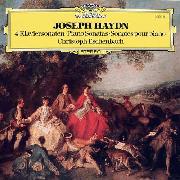 | Joseph Haydn
4 Piano Sonatas Hob XVI/34/35/36/37
1780
Among the best piano sonatas in Haydn's catalog, which is to say "decent, if not as inventive in their execution as Mozart's were in his, and theirs". |
| 58 |  | Wolfgang Amadeus Mozart
Symphony No. 34 in C major, K. 338
29 August 1780
His best symphony to dare, lots of great melodic ideas paired with a second movement that doesn't meander in its stillness, but plays with it inventively. A must-listen and a very strong starting point for people wanting to familiarize themselves with Mozart's symphonic work. |
| 59 |  | Joseph Haydn
String Quartet "The Russian" Op.33.No1-6
25 December 1781
If the Sun quartets show Haydn emerging into his mature era, the Russian quartets are him flexing his muscles. Terrifically eventful musical pieces, showing even more equality among the instruments and really allowing Haydn to imbue personality in the works. Highlights are the second quartet ("The Joke") with its amusing stops and starts, and the third quartet ("The Bird"), evoking natural qualities in a way akin to what Debussy and his ilk would do some 100 years later. |
| 60 | 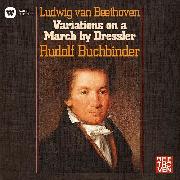 | Ludwig van Beethoven
Nine Variations on a March by Dressler, WoO 63
1782
There are certainly worse places to start. Basic theme and variations stuff here, more rudimentary than a lot of Mozart's fare at this age, but prescient enough nevertheless. |
| 61 |  | Wolfgang Amadeus Mozart
Piano Concerto No. 11 in F major, K. 413
1782
Adore the slow movement of this piece, tranquil and meditative without being especially complex. |
| 62 |  | Wolfgang Amadeus Mozart
Piano Concerto No. 12 in A major, K. 414
1782
Nice lightweight work, intended for a smaller ensemble which causes it to stand out from his other, more grandiose works of the period. |
| 63 |  | Wolfgang Amadeus Mozart
Die Entfuhrung aus dem Serail, K. 384
16 July 1782
Perhaps the work responsible for first establishing Mozart's reputation as an opera composer. Vivacious in its vitality, some of the widest-ranging vocal parts you would have heard in an opera at that point (the high soprano being a particular favorite of Wolfgang's), and an orchestra that punctuates each measure with such force that only the very best singers could stand out over such a ruckus. But stand out they did, for the young lad could always find himself the very best at what they did. An early triumph during his time in Vienna. |
| 64 | 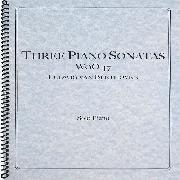 | Ludwig van Beethoven
Three Early Piano Sonatas, WoO 47,
1783
There are elements of the young Beethoven understanding dynamic contrasts at this point, which is quite interesting, but ultimately these works are as minor as you'd expect. |
| 65 |  | Wolfgang Amadeus Mozart
Piano Sonata No. 10 in C major, K. 330
1783
More subdued even in its faster moments. Among Mozart's most elegant, mature piano sonatas that he ever wrote. |
| 66 | 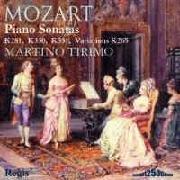 | Wolfgang Amadeus Mozart
Piano Sonata No. 11 in A major, K. 331
1783
The full-length sonata isn't one of Mozart's strongest, but the last movement ("Rondo alla turca", or "Rondo in the Turkish style") is a triumph - one of Mozart's very best piano melodies, if not his best, and a mainstay of children's classical compilations ever since. |
| 67 |  | Wolfgang Amadeus Mozart
Piano Sonata No. 12 in F major, K. 332
1783
A twinkly little thing, lots of trills and right-hand fireworks make this sparkle more than most. |
| 68 |  | Wolfgang Amadeus Mozart
Piano Sonata No.13 in B flat, K333
1783
Perfectly nice, stately sonata that epitomizes this era of Mozart's piano-writing without standing out from the crowd much. |
| 69 | 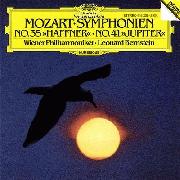 | Wolfgang Amadeus Mozart
"Haffner" Symphony No. 35 in D major, K. 385
23 March 1783
Indubitably Mozart's symphonic triumph to this point, a fiery work that contains as fine a sense of dynamics as any of his pieces did. The energy of his operatic compositions seems to translate very directly and completely into his symphonic works of the time, which elevate them into a stratosphere that nobody else was achieving at this point. |
| 70 |  | Wolfgang Amadeus Mozart
Great Mass in C minor, K. 427
26 October 1783
Incomplete in that it's missing a portion of the Credo (which was thus never included in period performances), but it nevertheless remains an important work of Mozart's on a grand scale. It foreshadows the Requiem, handling its grandiosity with a certain elegance rather than leaning into its more bombastic traits. |
| 71 |  | Wolfgang Amadeus Mozart
Symphony No. 36 in C major, K. 425
4 November 1783
Reminiscent of some mid-career Mozart symphonies in its structure, not as forward-pushing as his other works of the period (a symptom of this being composed in several days, perhaps). Energetic and fiery in the composer's own unique way, nonetheless. |
| 72 |  | Wolfgang Amadeus Mozart
Symphony No. 37 in G major, K. 444
4 November 1783
Not a Mozart symphony at all, but a Michael Haydn symphony (no. 25, specifically) featuring a Mozart-penned intro. Inoffensive, but dull and obviously impossible to evaluate in the context of Mozart's career. |
| 73 | 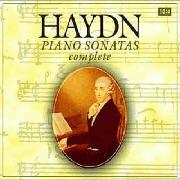 | Joseph Haydn
Piano Sonata in G major, Hob. XVI/40
1784
Only 2 movements to this sonata, making it even slighter than many of his other works. |
| 74 |  | Joseph Haydn
Cello Concerto No. 2 in D major, Op. 101
24 March 1784
Haydn's approach to writing for the cello and giving it equal stature to the other string instruments is to be lauded. This work may be his best feature of the instrument as a soloist. |
| 75 |  | Wolfgang Amadeus Mozart
Quintet in E-flat major, K.452
1 April 1784
Mozart himself called this one of his greatest works, and it isn't difficult to see why. The wind arrangement here is vibrant, horns and clarinets interweaving while the piano acts as a filling, but not overbearing accompaniment. |
| 76 |  | Wolfgang Amadeus Mozart
Piano Concerto No. 17 in G major, KV. 453
12 April 1784
The final movement of the piano concerto is based on birdsong - that is, a melody sung by the starling Mozart had just bought as a pet. A fun, ear-catching concerto all the way through. |
| 77 |  | Wolfgang Amadeus Mozart
Piano Concerto No. 18 in B♭ major, K. 456
30 September 1784
The slow movement is the highlight with this concerto, a theme and variations that's meditative in its own pleasant way. |
| 78 |  | Ludwig van Beethoven
Three piano quartets, WoO 36
1785
The first quartet is easily the adolescent Beethoven's greatest accomplishment to this point, an early sign of his expressiveness and emotive writing style. |
| 79 | 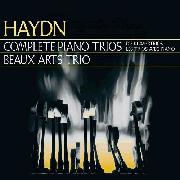 | Joseph Haydn
Piano Trio E-flat major, Hob.XV:10 Op.27
1785
Rating applies for the Op. 27 trio collection as a whole - slight, but Haydn makes the sparser instrumentation work well. |
| 80 |  | Wolfgang Amadeus Mozart
Piano Sonata No. 14 in C minor, K. 457
1785
Very probably Mozart's greatest piano composition, a sublime effort that predates Beethoven's early classic works by a decade and change, yet seems clearly linked. The dynamics are tense and fiery, an emotional back-and-forth that may reveal more of Mozart's soul than anything else he ever penned. The second movement, with its soft lilts and pauses, seems particularly inspirational to Beethoven's "Pathetique" sonata from just a few years later. |
| 81 |  | Wolfgang Amadeus Mozart
String Quartet No. 19 in C major, K. 465
1785
A highlight of the "Haydn" quartets, applying dissonance more liberally than any of the other pieces in that collection, or indeed most other pieces from that era. |
| 82 |  | Wolfgang Amadeus Mozart
"Haydn" String Quartets, Op. 10
1785
Inspired directly by Haydn's Russian quartets from 4 years previously, and in some ways these quartets feel like the most experimental music of Mozart's entire catalog. Dissonance gets deployed in very unique ways in several of these quartets, the likes of which haven't been seen much since the later madrigals of Gesualdo. Haydn himself is said to have called Mozart "the greatest composer known to me" after hearing these works - hard to find more fitting praise than that. |
| 83 |  | Wolfgang Amadeus Mozart
Piano Concerto No. 20 in D minor, K. 466
11 February 1785
The opening movement is one of Mozart's darkest, most foreboding minor-key statements, although the piece does get progressively cheerier from there, ending in the parallel major key. One of his very best concertos of any kind, and just another example cf his proto-Romantic approach here. |
| 84 | 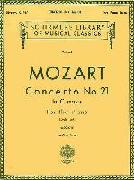 | Wolfgang Amadeus Mozart
Piano Concerto No. 21 in C major, K. 467
9 March 1785
Alright, perhaps *this* is Mozart's best piano concerto. There's something about how the piano lines up with the strings in the second movement that is practically heaven-sent, and the last movement is a tour de force in dexterity as only Mozart could do in those days. Demanding in many ways, an essential work of the period. |
| 85 |  | Wolfgang Amadeus Mozart
Concerto for Piano and Orchestra No. 22, K. 482
December 1785
There's a lightweight charm to the final movement that exceeds even Mozart's standards for lightweight charm. That said, this is not a small sampling of Wolfgang: it's one of his very longest concertos, although it doesn't feel its length at all, really. |
| 86 | 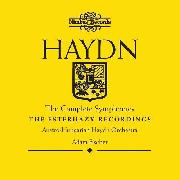 | Joseph Haydn
Symphony No. 82 in C major, "The Bear"
1786
Great first movement to this one, but the kicker is the final movement, featuring cello/bass accents that, when paired with the horns/winds, are meant to replicate the sound of bagpipes. Absolutely delightful number. |
| 87 |  | Joseph Haydn
Symphony No. 85 in B-flat Major
1786
Not a highlight of Haydn's symphonies, of this era or any other, but a good one nonetheless with plenty of enjoyable melodies to go around. |
| 88 |  | Wolfgang Amadeus Mozart
Horn Concertos No. 1-4 K.412/417/447/495
c. 1786
A lovely, stately collection of concertos. Aside from the first, which is short to the point of being incomplete (it was written just before the composer's passing), everything else zips by breezily and pleasantly. |
| 89 |  | Wolfgang Amadeus Mozart
String Quartet No.20 in D major, K.499
1786
The "Hoffmeister" quartet, so called, is not quite at the level of what Mozart was doing with other string quartets during this period, although the counterpoint in parts is certainly unique for the era. |
| 90 | 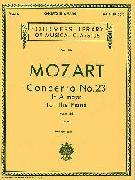 | Wolfgang Amadeus Mozart
Piano Concerto No. 23 in A major, K. 488
2 March 1786
Soft-spoken, with a gorgeous second movement that rivals any of Herr Wolfgang's most tranquil moments. |
| 91 | 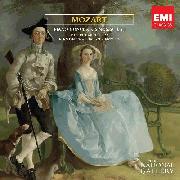 | Wolfgang Amadeus Mozart
Piano Concerto No. 24 in C minor, K. 491
24 March 1786
(Probably) Mozart's greatest piano concerto, a masterful display of how much his composing had matured as he entered his 30s. The thematic developments in the first movement are so winding, so ornate that they boggle the mind, and the last two movements mix stillness and serenity (#2) with an eerie creepiness (#3) that takes the listener on a ride through, if not Mozart's mental state (as other pieces of his have done), then through the mind of someone who views the world as through a kaleidoscope. It is vibrant, full of life and intrigue, and as alive as a piece of that era could get. How much more Enlightenment-idealistic could you ask for? |
| 92 | 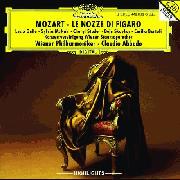 | Wolfgang Amadeus Mozart
Le Nozze di Figaro, K. 492
1 May 1786
Comic opera at its finest. Mozart's orchestration and melodies were rarely better displayed than here, and although the characters are given less demanding vocal roles than what's witnessed in other Mozart operas, they're still superbly written. It is also seismic in scope, setting the expectation for many a future German opera - go big or go home, as they say. The highlight, cliched as it is, is the intro music, a superbly attention-gathering moment that has rarely ever been equalled. |
| 93 |  | Wolfgang Amadeus Mozart
Piano Concerto No. 25 in C major, K. 503
4 December 1786
An exceedingly good listen, more symphonic than many of his other concertos (the orchestra gets quite a lot to do here). Less weighty than no. 24, its minor-key counterpart, which may either hurt or help it depending on your tastes. |
| 94 |  | Wolfgang Amadeus Mozart
"Prague" Symphony No. 38 in D major, K. 504
4 December 1786
Known for its heavy emphasis on wind instruments, potentially a conscious nod to the city this symphony is dedicated to/inspired by. The three-movement symphony structure was a dying art at this point, so Mozart resurrecting it for one of his very last symphonies is quite an interesting trick. |
| 95 |  | Joseph Haydn
Symphony No.88 in G major
1787
Popular Haydn symphony despite not being among his classic bunches (neither Parisian nor London-originated). The slow movement is among his darker pieces, while the final movement is Mozart levels of cheerful. |
| 96 | 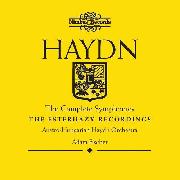 | Joseph Haydn
Symphony No. 89 in F major
1787
More wind-focused than some of his other symphonies, but compared to his other output around this time, it's a little bit plain. |
| 97 | 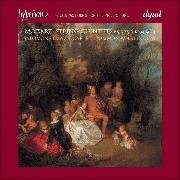 | Wolfgang Amadeus Mozart
String Quintet No. 4 in G minor, K. 516
16 May 1787
Excellent overall, but with an absolutely stunning third movement, among the saddest things in his catalog. The starts and stops and the ways the different instruments' registers mingle - more examples of Mozart following Haydn's example and equalling, if not surpassing the great master of string compositions. |
| 98 |  | Wolfgang Amadeus Mozart
Ein musikalischer Spaß) K. 522
14 June 1787
A lark of a piece, meant to break rules but as a means of poking fun at rule-breakers rather than pushing forward. Some of the jokes are about formal development which may fly over the heads of those unfamiliar with the forms of the period, but hearing the out-of-tune horns in movement 2 will amuse even the less familiar listener. |
| 99 |  | Wolfgang Amadeus Mozart
Serenade No. 13 in G Major, K.525
10 August 1787
The first and last movements are household melodies, the former being Mozart's most famous. If the middle two movements seem unusually unremarkable by comparison, it's much more a testament to the vibrance they're surrounded by than it is any defects with those (competently done) passages. Mozart's writing never sounded more purely enjoyable than it did here. |
| 100 |  | Wolfgang Amadeus Mozart
Don Giovanni K. 527
29 October 1787
Mozart may have viewed this as simply a comic opera, but the drama plays a plentiful role in here as well, and the characters? Some of the best ever written for an opera - Don Giovanni himself is the larger-than-life role of a lifetime. The music here doesn't leap off the pages in the way other Mozart operas do, choosing instead to reinforce the text and characters. It's a complete package in the way few other operas are. |
|
